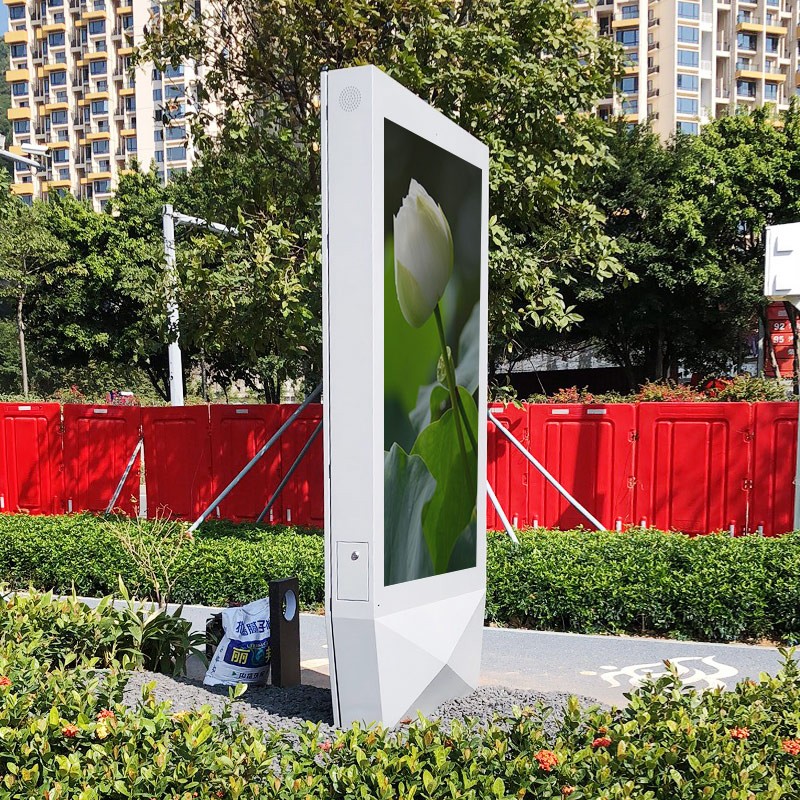Digital Signage for Outdoor Advertising: Capturing Attention
Digital Signage for Outdoor Advertising: Capturing Attention.In the bustling landscape of modern urban environments, the competition for attention is fierce. Amidst the cacophony of city life, outdoor advertising faces a unique challenge: how to stand out and engage passersby in an increasingly cluttered visual space. Enter digital signage, a dynamic and versatile medium that has revolutionized the way brands communicate with the public. By leveraging advanced technologies, digital signage for outdoor advertising has become a powerful tool for capturing attention, delivering messages with impact, and fostering deeper connections between brands and consumers.

The evolution of outdoor advertising has been marked by a shift from static billboards to more sophisticated, interactive displays. Traditional outdoor advertising, while still prevalent, often suffers from limitations such as lack of flexibility and engagement. Static billboards, once the mainstay of outdoor advertising, are now being supplemented or replaced by digital signs that can adapt in real-time, display vibrant visuals, and even interact with viewers. This transformation is driven by advancements in display technology, data analytics, and connectivity, all of which converge to create a more immersive and personalized experience.
One of the key advantages of digital signage in outdoor advertising is its ability to captivate audiences through motion and color. Unlike static billboards, digital displays can showcase dynamic content that changes frequently, keeping viewers engaged and entertained. Animation, video, and real-time data integration allow for the creation of eye-catching advertisements that tell a story or convey a message in a more compelling way. The use of high-definition screens with vibrant colors and sharp contrast ensures that messages are not only seen but also remembered.
Moreover, digital signage offers unparalleled flexibility in terms of content management. Advertisers can update their messages instantly, without the need for physical intervention. This means that campaigns can be adjusted in response to current events, weather conditions, or even the time of day. For instance, a café might promote its breakfast menu in the morning and switch to dinner specials in the evening. This level of adaptability ensures that advertising content remains relevant and timely, increasing its effectiveness.
Another significant benefit of digital signage is its capacity for interactivity. Interactive displays can engage viewers through touch screens, motion sensors, or even augmented reality. Imagine a pedestrian walking by a digital sign that responds to their movement, displaying a personalized message or offer. Or a tourist using an interactive map to find directions to the nearest attraction. These interactive elements not only make the advertising experience more engaging but also provide valuable data to advertisers about viewer behavior and preferences.
The integration of data analytics further enhances the effectiveness of digital signage. By collecting data on viewer demographics, dwell times, and interaction patterns, advertisers can gain insights into what content resonates with their audience and adjust their strategies accordingly. This data-driven approach allows for more precise targeting and optimization of advertising campaigns, ensuring that messages are delivered to the right people at the right time.
Location-based advertising is another area where digital signage excels. With the ability to target specific geographic areas, digital signs can deliver localized content that is relevant to the surrounding community. For example, a retail store in a shopping district can use digital signage to promote in-store events or exclusive offers to nearby shoppers. This hyper-local targeting not only increases the relevance of the advertising but also drives foot traffic and sales.
In addition to its marketing benefits, digital signage can also serve as a valuable public service. In cities, digital displays can provide real-time information about public transportation schedules, weather updates, and emergency alerts. This dual functionality—combining commercial advertising with public information—enhances the overall value of digital signage and fosters a sense of community engagement.
The environmental impact of digital signage is also worth considering. Although digital displays consume energy, they are often more efficient than traditional lighting methods used in static billboards. LED screens, for example, use less energy and have a longer lifespan than incandescent bulbs. Furthermore, the ability to update content digitally eliminates the need for physical printing and material waste, making digital signage a more sustainable choice for outdoor advertising.
As the technology behind digital signage continues to advance, we can expect even more innovative applications in the future. For instance, the integration of artificial intelligence and machine learning could enable digital signs to recognize and respond to individual viewers' emotions or preferences. Imagine a digital display that adjusts its content based on the viewer's age, gender, or even their mood. This level of personalization would mark a new frontier in outdoor advertising, further enhancing the ability of digital signage to capture and maintain attention.
However, with great power comes great responsibility. The proliferation of digital signage also raises concerns about visual pollution and light pollution. Cities must balance the benefits of digital advertising with the need to maintain aesthetic beauty and reduce light pollution. Regulations and guidelines can help ensure that digital signs are used responsibly, respecting the urban environment and the well-being of residents.
In conclusion, digital signage has emerged as a game-changer in outdoor advertising, offering unparalleled flexibility, engagement, and personalization. By leveraging advanced technologies, digital displays can capture attention, deliver impactful messages, and foster deeper connections between brands and consumers. As the technology continues to evolve, we can expect even more innovative and sustainable applications of digital signage in the urban landscape. The key lies in using this powerful medium responsibly, ensuring that it enhances rather than detracts from the urban environment, and that it serves both commercial and public interests. In this way, digital signage for outdoor advertising will continue to be a vital component of modern cityscapes, captivating audiences and driving meaningful interactions.
Application scenarios of digital signage








